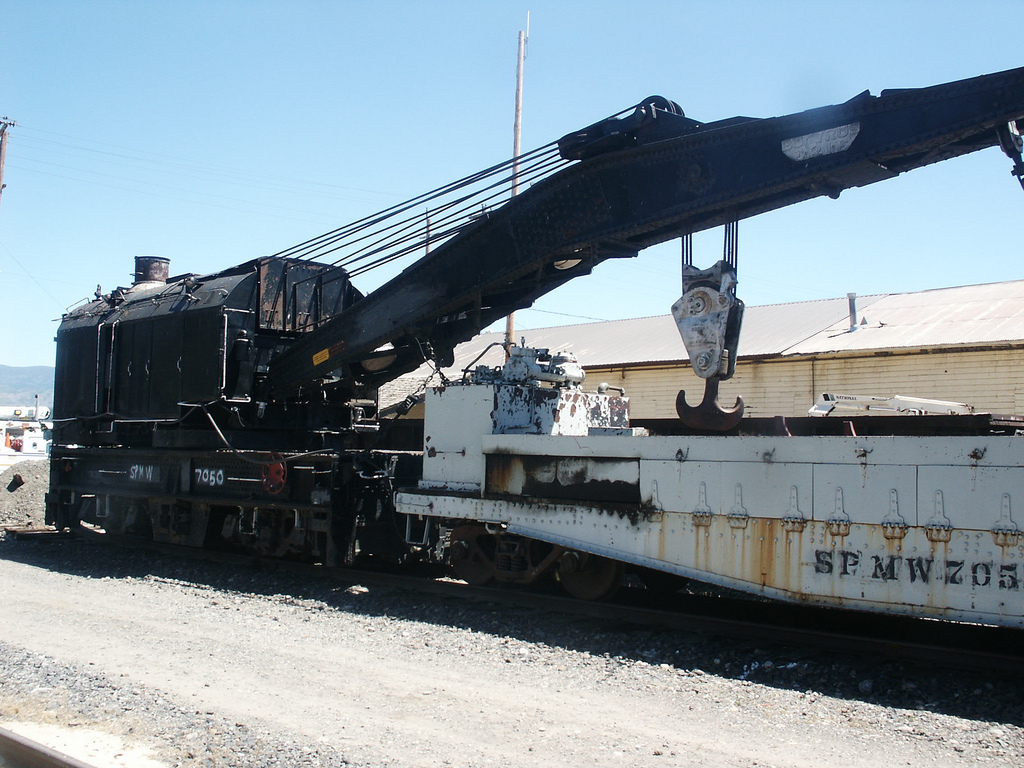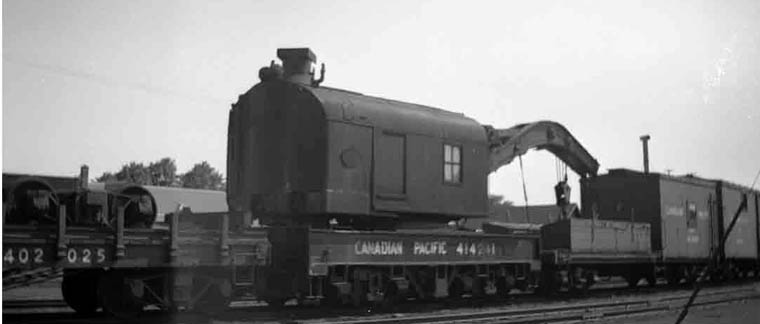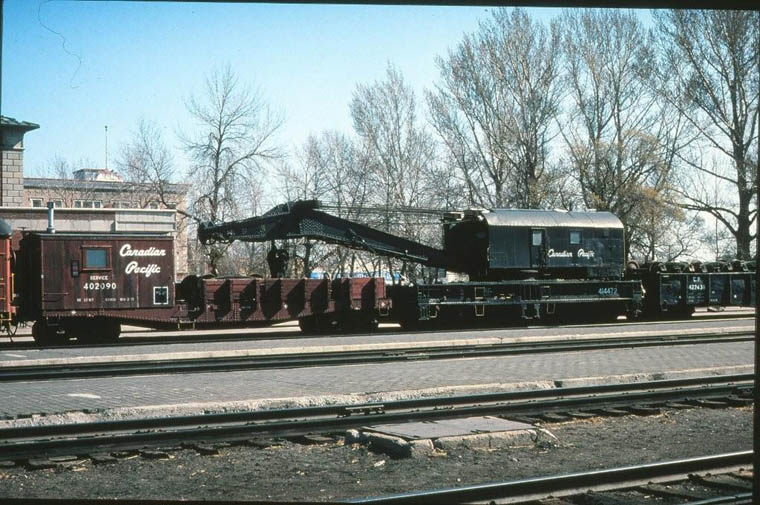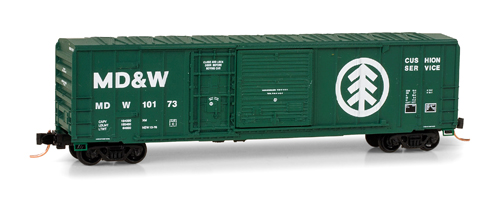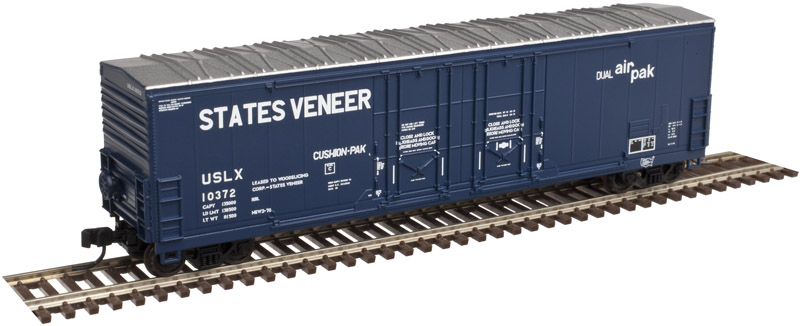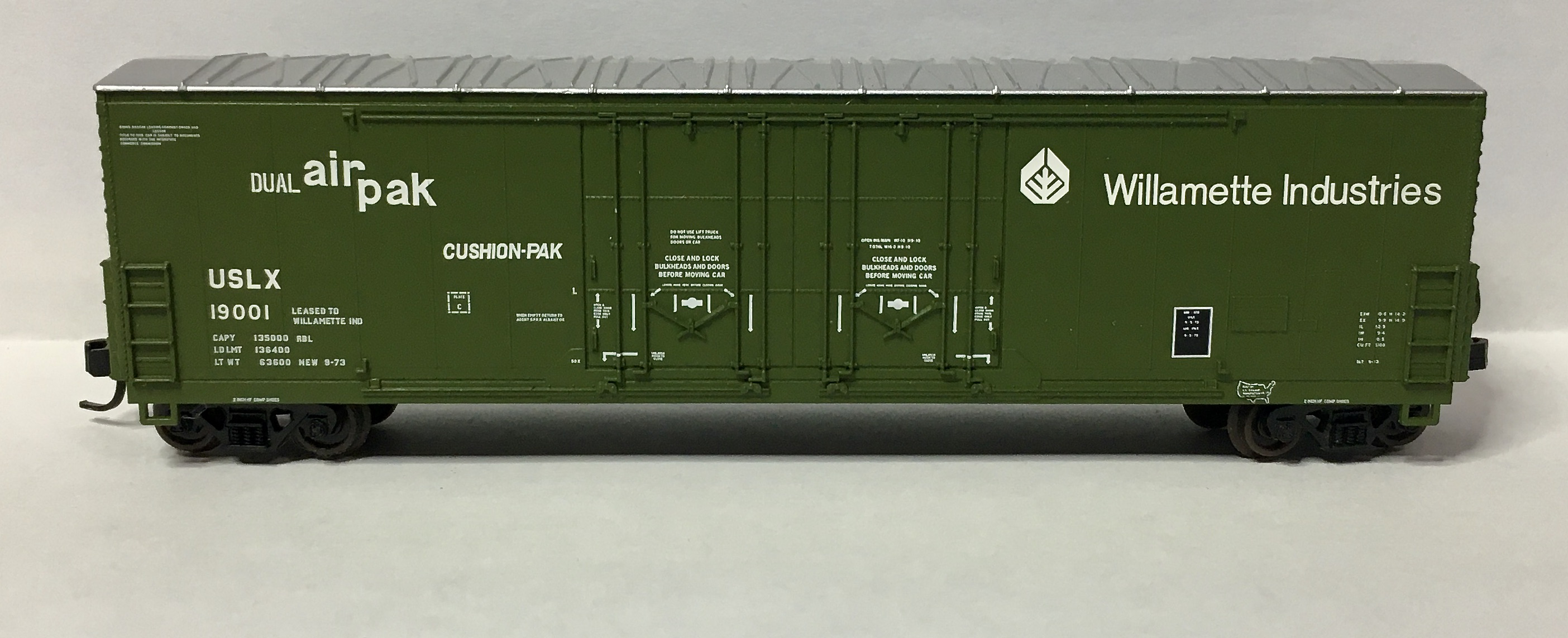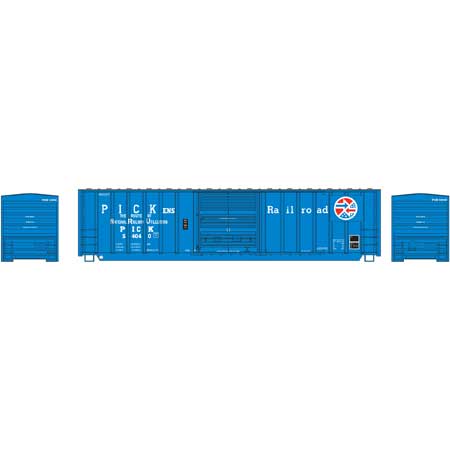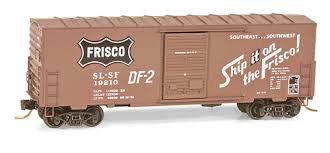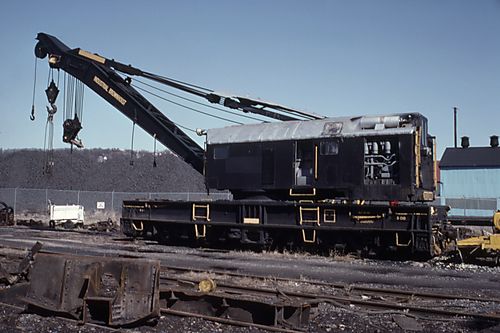History: A complete wreck train consisted of a locomotive, a wreck crane, tool cars, and enough bunk and cook cars for personnel required for a particular wreck. Wreck cranes and tool cars were often stationed at strategic points along the railway line. Division terminals were considered strategic points because locomotives and engine, train, and wreck car crews were always available on call. Wreck train equipment had to be prepared for immediate movement. Ties, rails, spikes, and other repair materials are stockpiled at various points. An emergency supply of such items were also loaded in suitable cars and held with each wrecker as part of the wreck train.
A wreck train, or “relief train” as the railroads preferred to call them used a huge piece of equipment built by companies such as Brownhoist. A typical wrecking crane was powered by twin diesel engines with a 500,000 pound capacity. This crane could easily lift an entire Reading T-1 steam locomotive. At 191-tons, it is a very heavy piece of equipment. It easily outweighs an Alco C630!
A wreck train, or “relief train” as the railroads preferred to call them used a huge piece of equipment built by companies such as Brownhoist. A typical wrecking crane was powered by twin diesel engines with a 500,000 pound capacity. This crane could easily lift an entire Reading T-1 steam locomotive. At 191-tons, it is a very heavy piece of equipment. It easily outweighs an Alco C630!
Railroad/Company: Alexander Ephraim Brown (14 May 1852-26 Apr. 1911) invented the Brown hoist which revolutionized the lake shipping industry. He was born in Cleveland, Ohio, the son of Fayette and Cornelia Curtis Brown. He graduated from CENTRAL HIGH SCHOOL and completed a course in civil engineering at Brooklyn Polytechnical Institute in 1872. While employed as chief engineer at the Massillon Bridge Company of Massillon, Ohio, in 1873-74 Brown devised a method of building bridge columns from scrap iron and steel.
Returning to Cleveland, he continued to work as a mechanical engineer but also experimented with ways to facilitate the unloading of bulk cargo on the Great Lakes by partially automating the process. Brown designed a cantilevered crane, rigged with wire rope to convey an automatic clamshell bucket to and from the ship's hold, removing the cargo. His hoist, first set up on the Lake Erie docks, reduced lake transportation costs and greatly shortened the turn-around time of the vessels.
He and his father, Fayette Brown, organized the Brown Hoisting & Conveying Machinery Company in Cleveland in 1880 with a capital of $100,000, incorporating it in 1893. Brown secured several hundred patents on his invention, which was distributed all over the world. The firm also produced other material-handling equipment for docks, railroads, and coal and steel plants.
By 1900, the firm had been renamed The Brown Hoisting Machinery Company. Its plant was largely destroyed by fire in December 1900. In 1931, it merged with Industrial Works (Collection 845) of Bay City, Michigan, to form The Industrial Brownhoist Company (Collection 841). American Hoist & Derrick acquired Industrial Brownhoist as a division in 1960.
Returning to Cleveland, he continued to work as a mechanical engineer but also experimented with ways to facilitate the unloading of bulk cargo on the Great Lakes by partially automating the process. Brown designed a cantilevered crane, rigged with wire rope to convey an automatic clamshell bucket to and from the ship's hold, removing the cargo. His hoist, first set up on the Lake Erie docks, reduced lake transportation costs and greatly shortened the turn-around time of the vessels.
He and his father, Fayette Brown, organized the Brown Hoisting & Conveying Machinery Company in Cleveland in 1880 with a capital of $100,000, incorporating it in 1893. Brown secured several hundred patents on his invention, which was distributed all over the world. The firm also produced other material-handling equipment for docks, railroads, and coal and steel plants.
By 1900, the firm had been renamed The Brown Hoisting Machinery Company. Its plant was largely destroyed by fire in December 1900. In 1931, it merged with Industrial Works (Collection 845) of Bay City, Michigan, to form The Industrial Brownhoist Company (Collection 841). American Hoist & Derrick acquired Industrial Brownhoist as a division in 1960.
Item Links: We found: 1 different collections associated with Rail - Rolling Stock (Freight) - Wrecking Crane and Flatcar
- Collection N Scale Model Trains: 29 different items.
Item created by: gdm on 2018-03-05 10:47:48. Last edited by gdm on 2018-03-24 17:34:36
If you see errors or missing data in this entry, please feel free to log in and edit it. Anyone with a Gmail account can log in instantly.
If you see errors or missing data in this entry, please feel free to log in and edit it. Anyone with a Gmail account can log in instantly.


